By Dr.K. Javeed Nayeem
As most of us perhaps know ‘A bridge too Far’ was the title of an epic war movie from the seventies about the Second World War, based on a book of the same name by Cornelius Ryan. The story revolves around a strategic bridge at Arnhem in the Netherlands which the Allies try to secure, before air-dropping their troops there, behind German lines. Since I had read the book, which I still have with me, I was very eager to see the movie when it was released in the year 1977. But when it came to Mysore I was myself far away at Gulbarga, preparing for my own personal battle of facing the second MBBS examination which to me was no less than the Second World War itself!
I say this because of all the subjects I had to study in medical college, the toughest for me was Pharmacology which was a part of the second year package. While most of my friends and seniors used to perhaps rightly say that it was one of the easier subjects to pass, I used to disagree with them simply because memorising anything other than poetry, was nothing short of anathema to me.
And, Pharmacology was all about memorising the names of hundreds of drugs and their side effects which seemed like an endless and futile exercise to my poetry loving soul. But thankfully I secured a first class in pharmacology, much to my own relief and the relief of my very anxious parents!
But I did get to see the movie about the distant bridge I was longing to see, only much later, at one of its re-runs. But the bridge I’m talking about here today is one that is much nearer home. And, my writing about it today is also a sort of a re-run because I have written about it once, a few years ago in this very same column, which some of you may recall.
The bridge of my article today is the Lushington Bridge which after bearing the annual onslaught of the Cauvery floodwaters for exactly two full centuries was in the news two years ago for succumbing to the ravages of time. The bridge sometimes called the Wellesley Bridge by most people who know of its existence spans the Cauvery River connecting the large island of Shivasamudram close to a spot called Madhyaranga with the mainland at Satthegala village of Kollegal Taluk.
It is named after S. R. Lushington, the then Governor of Madras in whose domain the area lay at that time. The exact date of the original construction of this bridge is not known but what is on record is the fact that it was almost rebuilt on the foundations of a much older structure of the pre Tipu Sultan era by Ramaswamy Mudaliar, then an officer under the Mysore administration. A copy of a letter dated July 23, 1833, published in an account entitled ‘Narrative of a Journey to the Falls of the Cauvery’ by Lt. H. Jarvis, records this fact. And, the Journal of the Royal Asiatic Society which I have read endorses this on page 1834 of its volume IX. This entry says that Ramaswami even submitted a 187 inches long wooden model, which was in a scale of 10 feet to an inch, of his 1870 foot long bridge which Lushington himself carried to England and presented to the society.
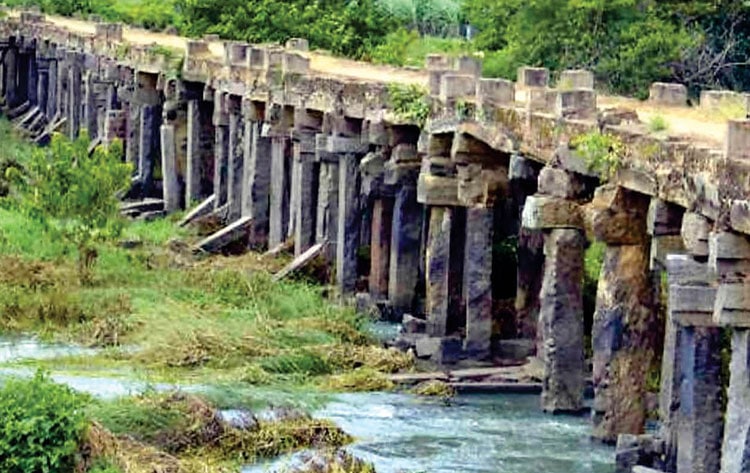
A really quaint thing to do but very sadly, a continuation of this record in the journal also says that due to a lack of space the society was unable to exhibit this beautiful model among its permanent exhibits! What a shame! Lushington who was a junior commissioner until 1831 later became the Governor of the Madras Presidency. Very interestingly the bridge which he had named after his superior, Lord Richard Colley Wellesley was then renamed after him by the British administration! That explains why the bridge is still known by two names. Thankfully, for all his efforts and his great zeal to serve the needs of the local inhabitants Ramaswami was rewarded by the new Governor General who was familiar with his abilities and sincerity, with a large Jagir or endowment comprising many villages and extensive stretches of land, the revenue from which he and his descendents were entitled to receive permanently.
But I’ll be writing about this very interesting and amazing turn of events in a subsequent article as it is going to be a very long story in itself which is no less interesting!
Now let me take you back by just two years instead of two centuries to our bridge. A forty feet long span of the Lushington Bridge was washed away by the flood waters of the Cauvery during the monsoon of 1918 which was considered a great loss because of the significance of this historic structure. While people of the State lamented this loss, surprisingly the State Government quickly stepped in like a medieval knight in shining armour, coming to the rescue of a maiden in distress and announced that it would get the bridge repaired immediately. It also announced a substantial grant for this purpose and immediately released an initial sum of rupees 95 lakhs.
The Government also stated that officials of the Department of Archaeology, Museums and Heritage would get the restoration done under its supervision by stone masons from Bagalkot and not just the damaged portion but the entire stretch of the bridge would be repaired to preserve it as a heritage monument. This was welcomed as very good news by heritage buffs like me. Since the bridge was built with very roughly hewn stone pillars, buttressed at their bases on the rocky bed of the river and connected on the top by horizontal stone slabs I thought that the restoration work too would be done keeping this construction method in mind.
But last week when I happened to visit the place with my family to view the waterfalls in their full monsoon glory I was aghast to see how thoughtlessly the bridge restoration is being done. Presumably machine cut stone pillars with perfectly smooth sides which look just like cast concrete pillars have been set up. And, I will not be surprised if a similar treatment is meted out to the connecting spans that are going to be laid on top of them very soon. The restoration work looks like a sharp slap on the face of the ancient bridge and will stand out like a sore thumb indicating how incompetent our so called experts can be.
I am of the opinion that if ordinary, village bred and village trained stone masons had been entrusted with this work, without any expert interference, they would have done a great job of copying and incorporating the original design of the bridge into their restoration work. Heritage conscious citizens should immediately step in and prevail upon the State Government to ensure that the present type of restoration work is stopped immediately before it irreparably mars the beauty and grandeur of a bygone era with its shoddy repair work.
If our authorities and experts cannot do a good and befitting job now with all our technical know how it is certainly better to leave the broken bridge untouched as a standing testimony to the abilities of the unlettered and humble construction workers and a farsighted Jagirdar from our glorious past!
e-mail: [email protected]



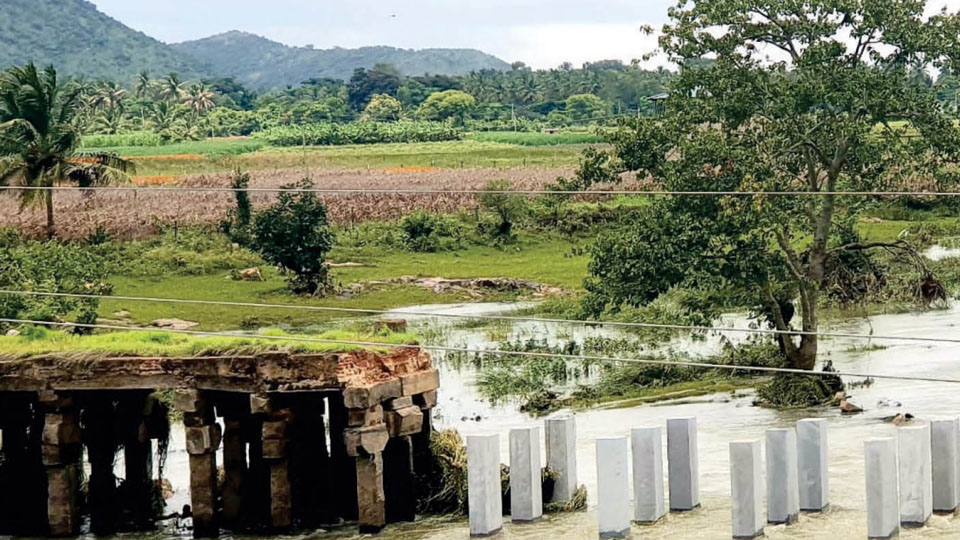
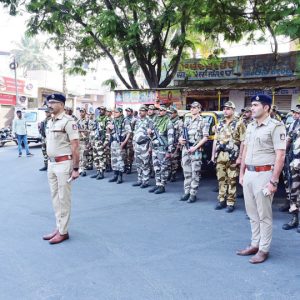
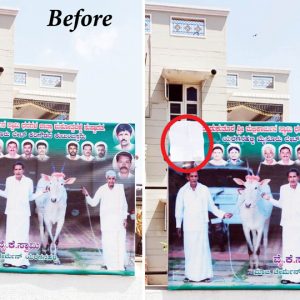
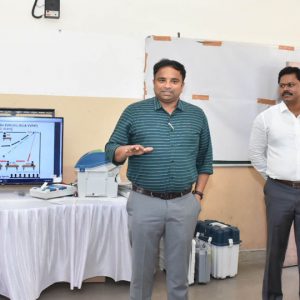
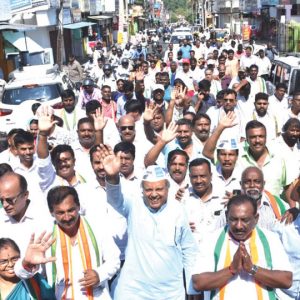
Living in the West I watched that film in 1977 when it was released. It was along star-studded film which was considered a s a flop. It would not have been available in India in 1977 any way in the same year. Cornelius Ryan’s the Longest Day -the invasion of Hitler’s Europe by allies by land, sea and air incursion in Normandy, France which was also made into an epic film. The essence of this film is that the effort was too far, meaning, it could not have been done as the airdrop became a failure, and bridge was rendered useless. It was considered as a tae been done without time,se old bridges with their own ancient structure are hard to restore, though appearing simple, which this author does not appreciate. These structures used ground mortar paste, which is hard to achieve these days.
Hence, It is bridge too far!
Every article by him, focuses on him, being a doctor. But, in those days of 1970s, his Gulbarga Medical College was not considered good when compared to Mysore Medical College, and the seats went to those who had no chance of securing them in Mysore Medical College,
It is his second article on the same subject!
This author was supposed to have been entrusted with a column , similar to what the legendary Pothan Joseph of Deccan Herald wrote under: “Over a cup of tea’, where he never mentioned self, but wrote briefly mixing humour and satire.
Nice try, Javeed Nayeem, but the film was released in the Western countries, having premiered in US in June 1977. The films f those days were on tape, and only a limited number of copies were made. These blockbuster films, including James Bond films arrived in India atleast 18 months later after their release and run in Western countries. India was then, and now too, is not considered as a prime market for the release of these films. Hence, Javeed Nayeem would have seen its release in 1977, even in Bombay! I watched it in July 1977 in a Western country, where I have lived for the last 5 decades.
It was an ambitious try with a dozen of Hollywood A-list stars , assembled by the English director Richard Attenborough . Cornelius Ryan the book author was dead by then, and script followed what he wrote, and the film run was long. In the West, there were 2 intervals for this film.
A bridge too far is an English saying, mostly used in England, as Cornelius Ryan born in Ireland, lived in England, during WWii, and it means : “not achievable”, and the Operation Market Garden, the operation which used the allies air drop was a failure.
In the context f the bridge which Nayeem refers to, it is : A bridge too far! as these ancient stone bridges, once deteriorated, and reach the stage of ruin, are extremely difficult to restore to their original form.
I watched this movie i n New York in July 1977, just a few days after its release towards the end of June 1977.
This author is talking preparing for his exam, and hence could not see this film then in 1977 after its release, which was July. Two issues here: 1. If I remember well, medical college yearly exams were not held in June or July in Karnataka or in any other state in India. 2. As the above posters said, This film would not have been released in India in June/July 1977, as all Western films arrive for viewing in India, almost 2 years late.
Well, in the Internet search, it says , the film was released in 1977, but ONLY in the US, Canada and in Europe.
About restoring almost 2 centuries old, this author claims: “I am of the opinion that if ordinary, village bred and village trained stone masons had been entrusted with this work, without any expert interference, they would have done a great job of copying and incorporating the original design of the bridge into their restoration work”. This is the problem with some one who thinks, he knows all, as no one knows all in his own field of work, let alone in another field. The problem again with his solution is, a stone mason could produce roughly chiselled stones, and the bridge constructed of these freshly quarried stones, would still look like a new bridge, and NOT as a restored bridge. This is because, the stones of the 2 centuries old bridge weathered over the time, and unlike the stone mason uses an artificial weathering worth 2 centuries on his stones, which is impossible, the reconstructed bridge will still look a new bridge and not a restored bridge.
The lesson and the moral: we should stick to what we know, and these days, even there a lot to be learned yet.
Correction: ” unless the stone mason uses an artificial weathering process…”
Javeed Nayeem says: “But thankfully I secured a first class in pharmacology, much to my own relief and the relief of my very anxious parents! ”
Should he correct the above to read: ” But thankfully I secured first class mark…..”, as I well remember that there was no single subject class declaration in my years of tabulating the results in Mysore and Bangalore universities.
Living in the US myself for over 50 years,I find these accusations ridiculous. F cousin his messages which are no less valid. Entitled morons,smug and superior simply because they don’t live in India’s difficult circumstances. The learned Doctor is 100 times the man you idiots will never be.
@satish
Posters are pointing out that the facts do not check out as provided by your ” learned doctor”! Perhaps as Trump’s citizen you do not care for the truth!
Your language is befitting to be a citizen of Trump’s US! You should be ashamed of it as a person in your 70s? No one who has lived over 50 years ,uses thaat kind of language. If you refute what iare posted, argue with facts.
In fact, US has more difficult time than any other country now.Hence, watch out!!
Hey Satish. OK, you lived in the US for over 50 years, but what is your point? Posters are, not accusing, but are pointing out facts which do not add up to scrutiny. If you live in the US, and read newspapers, the regular columnists there, like this doctor, check facts scrupulously when they present their weekly columns.
The facts which do not add up are: 1. This film was not released in India in 1977, although it was released in US and Europe late June 1977. 2. The medical exams were not scheduled in June 1977, as the article suggests, since it claims the film was shown in Mysuru at that time. 3. There is no subject-related class declaration in course: one could say first class grade/mark, but not first class as it always refers to the course class as a whole. You cannot restore a bridge, 2 centuries old, nearly to the state it was, using masons with their quarried stones today, as these stones stick out like a sore thumb, having not weathered for a long time. They look as out of place as the neatly cut stones that the author is complaining about. The solution is to use an expert restorer firm, which are difficult to find in India, a few of them are in Europe, where they routinely restore listed buildings.
You live in the US, today? You comment: “F cousin his messages which are no less valid” What do you mean by this?
If you really live in the US, today, good luck with the severe fall outs from the Corona Virus infections there! US has fared very bad , with hundreds of thousands of deaths for weeks-the worst hit country in th World. Hope, you have enough savings as a senior citizen, given that you must be at least over 65. Medicaid/Medicare do not work well, without your added funds. Hence, the healthcare situation is worse than in India or in any third world country.
The next time, you post, make sure that you refute with facts and not with a F language .
Sorry for some typos.